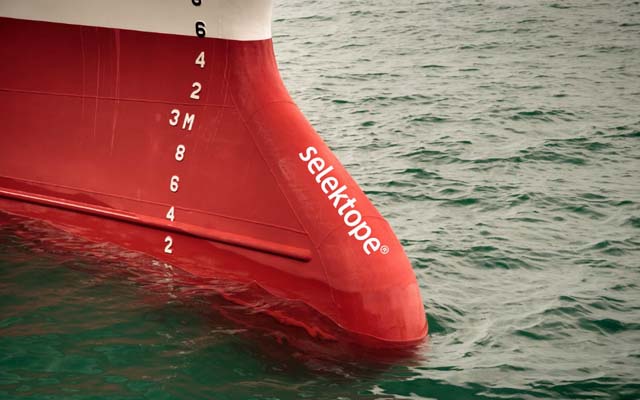As the commercial shipping industry looks to rapidly decarbonise to meet IMO GHG emission reduction rules, the biocidal antifouling coatings used to protect the majority of the global fleet from biofouling are expected to play an increasingly crucial role.
While marine biocides are critical for maritime decarbonisation, lowering the quantity of total biocides in antifouling paints, while still preserving their effectiveness, can help ship owners or operators to further minimise the environmental footprint of their vessels. Certain marine biocides, such as Selektope, can be used at extremely low concentrations in an antifouling coating system, supporting the opportunity for low biocide coating development, while at the same time delivering continuous barnacle fouling prevention performance.
This ability to enhance low biocide coating systems has made Selektope popular with paint manufacturers over the past decade. With a recommended use at 0.1% per wet weight of paint, the technology provides barnacle prevention performance at low concentrations, even when vessels remain stationary for long periods of time. The result, according to Selektope developer I-Tech, has been Selektope cementing itself (like a barnacle) onto the antifouling coatings market.
Since the first Selektope-containing antifouling coating was introduced to the industry in 2015, multiple antifouling coating products containing the biotechnology have been commercialised by several different global coatings manufacturers.
In total, 36 antifouling coating products that contain Selektope have been commercialised to-date, ranging from 60-month systems for ocean-going vessels, to outfitting coatings for the protection of newbuild vessels in shipyards, to domestic leisure boat coatings.
Magnus Henell, CEO I-Tech said: “As a new, disruptive marine biocide entrant to the antifouling market, the future success of Selektope was hard to predict when the technology was under development during the first decade of this century. However, the rapid expansion in products containing Selektope is underpinned by the ability to be used in coatings with very low biocidal coating levels and provide protection throughout the entire operational cycle of globally trading commercial vessels, even when encountering extended idling time. Demand for our technology is increasing in line with pressures in the shipping industry to significantly reduce emissions and invasive aquatic species transfer. Our mission is for Selektope to be included, as standard, in every marine antifouling coating so that ship owners can sail safe in the knowledge that their vessel is protected against barnacle fouling at all times. Over the next decade we will continue to make this mission become a reality.”
Image: Selektope is used in some 36 antifouling products (source: I-Tech)



